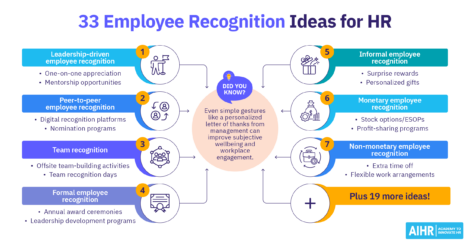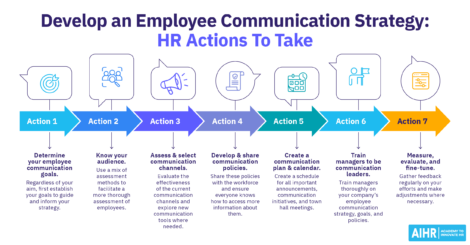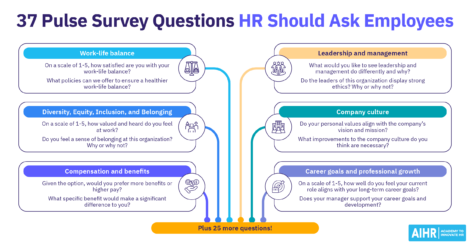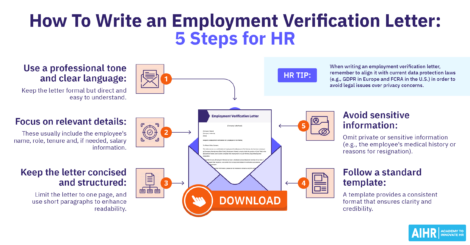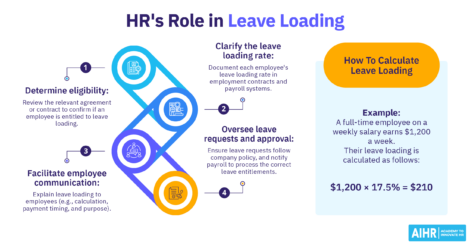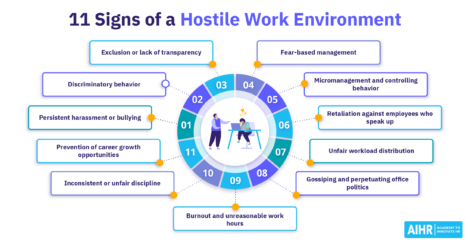Employee Sabbatical Leave: Everything You Need to Know
Employee sabbaticals are on the rise, offering workers a chance to recharge, pursue personal goals, or develop new skills. As workers’ priorities shift, more companies are adopting more flexible work options, and sabbatical leave is one way to give your workforce more freedom.

Taking a sabbatical leave from work can do wonders for both employees and organizations. Recent research from Harvard Business Review shows that sabbaticals are growing exponentially, with data from the Chartered Management Institute reporting that 53% of managers claim their organizations already offer sabbatical leave.
In this article, we’ll take a closer look at employee sabbatical leave, including the benefits of going on a sabbatical, the key elements of a sabbatical leave policy, and real-life examples of sabbatical ideas and programs.
Contents
What is sabbatical leave from work?
Why is a sabbatical important? Benefits for employees and employers
Sabbatical leave policy: Key rules and template
Sabbatical program examples
FAQ
What is sabbatical leave from work?
A sabbatical leave is a period in which an employee takes an extended break from work, with the agreement that they can return to their job once the leave is over. The reasons for taking a sabbatical can vary from pursuing further academic studies, working on a personal project, volunteering, traveling the world, or spending more time with family. Most sabbaticals are unpaid, but employers sometimes agree to pay the employee a reduced rate or retainer to secure their return.
Companies typically only grant sabbatical leave to employees who have been with the company for a certain amount of time. As such, sabbatical leave can be considered a type of employee benefit and is increasingly becoming a recruitment and retention tool.
The word “sabbatical” comes from the Hebrew word “Shabbat,” meaning rest, and was originally tied to the biblical practice of taking every seventh year off for rest and renewal.
How long is sabbatical leave?
Although there is no standard length for sabbatical leave, it is usually longer than one month and can last up to a year. Less than four weeks is normally taken as annual leave, while breaks longer than a year are often viewed as a career break.
Types of sabbatical leave
Some of the common types of sabbatical leave include:
- Sabbatical from work: Sabbatical leave from an existing job, often offered as an employee benefit.
- Career sabbatical: A form of career break, usually longer than a year, commonly taken by people who have started a family or those exploring alternative careers.
- Professional sabbatical: Focused on gaining new skills, certifications, or experiences in a professional context, such as volunteering in a related industry, participating in leadership training, or working on a personal project that aligns with career goals.
- Academic sabbatical: Leave is used to pursue professional qualifications, conduct research, or write a book that will help to further the employee’s professional development.
- Mental health sabbatical: A sabbatical for employees who feel stressed or burnt out because of their job or other responsibilities.
- Health or recovery sabbatical: Focused on addressing physical health challenges, recovering from illness or surgery, or dedicating time to improving overall wellness.
Sabbatical vs. leave of absence
Most types of leave, such as sick leave, annual leave, or parental leave, have a time constraint, whereas sabbaticals can usually last from one month to a year.
Unlike other types of leave, sabbatical leave is not mandated by laws; therefore, it’s up to the organization’s HR department to create a suitable policy.
Why is a sabbatical important? Benefits for employees and employers
Going on a sabbatical has benefits both for the employee as well as their employer. Let’s start with the positive effects of a sabbatical leave on employees:
- Less stress: According to a study conducted among university professors, those who went on sabbatical experienced less stress at work upon their return.
- Increased psychological resources: The same study found that people who returned from sabbatical leave benefited from an increase in psychological resources such as health, a sense of control and independence, energy, and even more professional knowledge!
- Increased wellbeing: Unsurprisingly, the above led to an increase in the overall wellbeing of those who enjoyed an extended break from work. A recent report stated that 65% of employees have felt burnt out at some point due to their work, and a sabbatical can lead to positive, lasting changes when the employee returns.
- Life experience: Taking a sabbatical is a brilliant way for employees to build life experience and return to work wiser, more resilient, and with new perspectives.
- Upskilling: Many companies (including Deloitte, Buffer, and McKinsey) now offer paid sabbaticals, during which employees can further their education and build skills and knowledge to progress in their careers.
Offering employees the possibility to take a sabbatical comes with benefits for employers too:
- Building a healthier, more productive workforce: Employees who return from a sabbatical often feel recharged and healthier, which can lead to improved morale, stronger collaboration with colleagues, reduced absenteeism, and potentially higher productivity.
- Succession planning stress test: Research shows that sabbaticals for executive leaders, particularly in non-profit organizations, provide a valuable opportunity to test the organization’s leadership capacity and identify areas for improvement in succession planning. While the ‘number ones’ are on sabbatical, aspiring leaders have the opportunity to grow, take on new responsibilities, and demonstrate their leadership skills. As such, a person’s sabbatical leave can be a good opportunity to stress test your succession planning and, if necessary, adjust it.
- Ready for unexpected absences: Being dependent as a team on one or more individuals is never a good thing. Having people go on a sabbatical pushes managers and teams to prepare for (long-term) absences so that when someone does leave, the business can continue as usual.
- Employer brand & talent acquisition: Offering employees a sabbatical shows that you care about your workforce and that you reward loyalty. While a sabbatical program won’t be the number one reason candidates choose to work for you (and it shouldn’t be), it can make a difference when a candidate compares one company to another. Research led by HR software provider ADP found that 20% of employees would accept a sabbatical instead of a pay rise.
- Increased retention: Giving employees the freedom to take a longer period of time off helps employees feel their personal development and wellbeing are valued, which helps to boost retention. Plus, when denied a sabbatical, your top performers may otherwise quit, so avoiding this will help you save time and money recruiting and training replacements.
Sabbatical leave policy: Key rules and template
Sabbatical leave rules
Here are some things to consider when creating your sabbatical leave rules:
- Eligibility: Sabbaticals are often used to reward employees for their loyalty. Therefore, people usually become eligible for a sabbatical leave after they’ve spent a certain period with the company and are often at a senior level, for example, after 5 years of service. Determine the criteria that will make your employees eligible for a sabbatical.
- Duration: Can people take three months off or a year? Does the duration depend on how long they’ve been working for the company? What’s the maximum period you will allow employees to go on a sabbatical leave?
- Frequency of sabbaticals: Once an employee has taken a sabbatical, are they entitled to take another one in the future? If so, when? An organization might require an employee to complete a further set number of years in the organization before requesting another sabbatical.
- Paid vs. unpaid sabbaticals: This will often depend on budgets and the length of the sabbatical. Some companies decide to pay a certain percentage of an employee’s salary while they’re on sabbatical leave, others pay full salaries, and there are also organizations that decide not to pay. You can also decide to pay (or not) depending on the reason someone wants to take a sabbatical.
- Other benefits: Will the employee continue to receive their other benefits, such as health insurance, pension, company car, etc., during their sabbatical?
- Application & approval: How can employees apply for a sabbatical? Do they have to write a formal letter of request, or can they simply use the company’s time off request form? How much time in advance do they need to apply? Who needs to approve the sabbatical leave? How long can an employee expect to wait before receiving a decision on their application?
- Conduct during leave: Your sabbatical rules should include guidelines for employees on maintaining your code of conduct, even if they’re not actively working. For example, nondisclosure agreements should be adhered to, and behavior on social media should not reflect badly on the company.
- Return to work: Agree on a date for the employee’s return to work, whether they will have their old job back or be given a similar role, and the terms that will be offered. This should be arranged before the employee leaves. HR should also create an official plan to welcome the employees back on their return, provide them with any training needed, and arrange for them to meet new colleagues.
It’s essential to consider all of the above to create a well-structured process to manage sabbaticals in your organization.
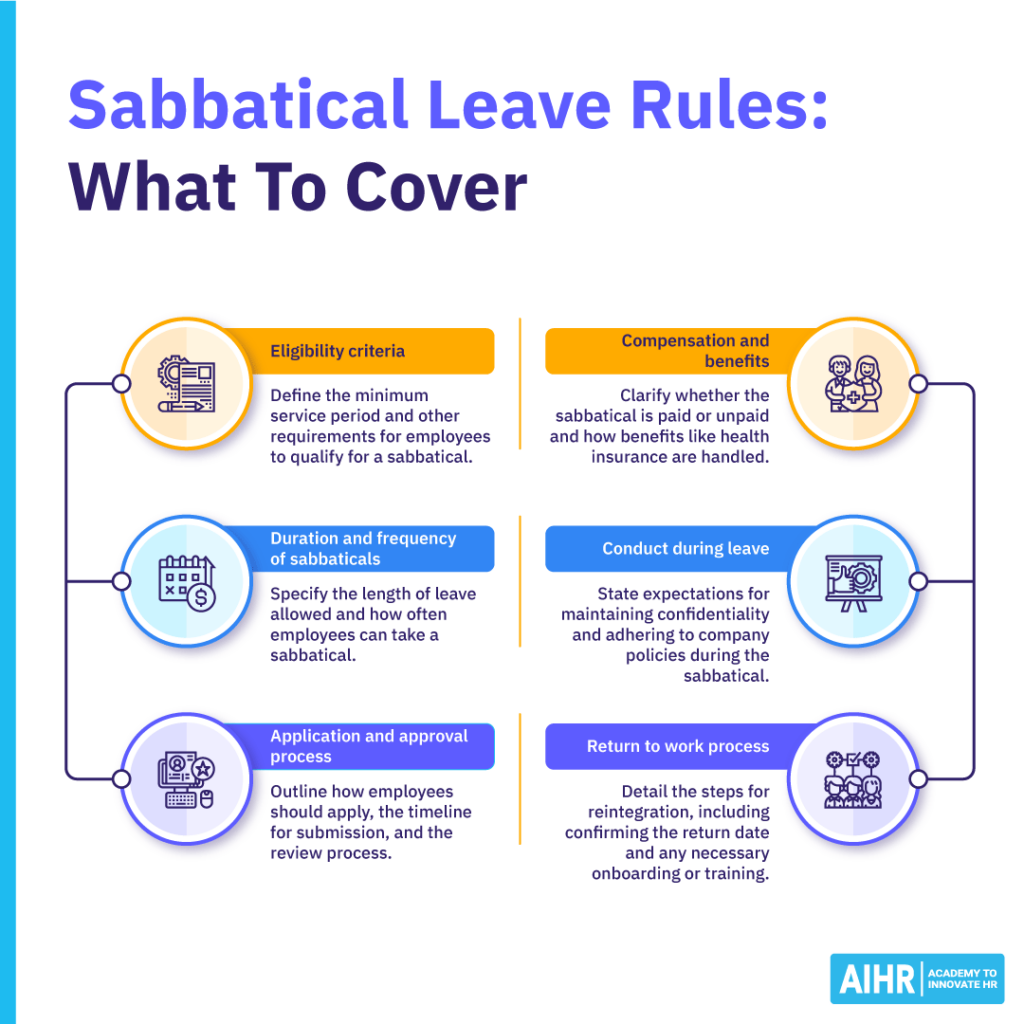
Sabbatical leave policy & template
Having a formal sabbatical leave policy in place streamlines how the leave works and helps to protect both parties. Download our sabbatical policy template and use this as a base to create your own policy that works for your organization.
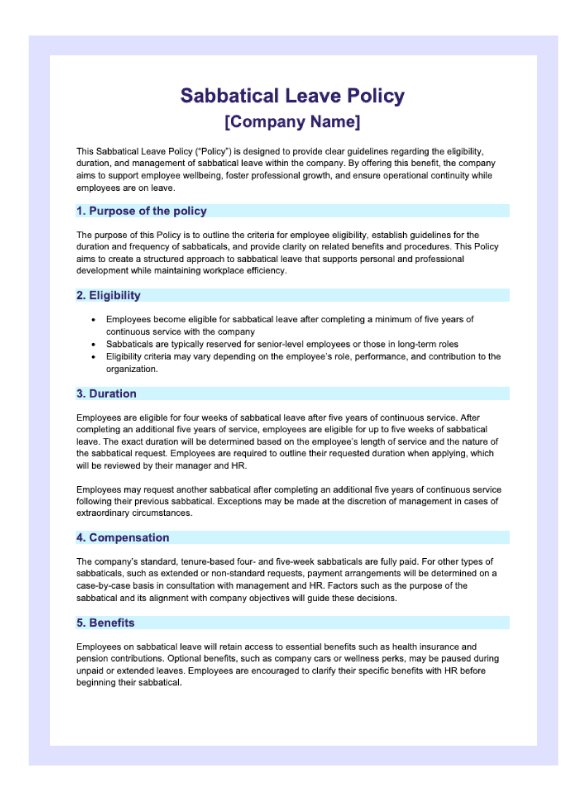
Sabbatical program examples
If you’re thinking about including a sabbatical leave in your employee benefits or modifying your existing sabbatical policy, take a look at these five examples of companies that have successfully implemented a sabbatical program.
Bank of America sabbatical
Bank of America’s sabbatical program allows employees to take 4-6 weeks of additional paid time off after completing 15 years of service with the company. Employees can take up to two sabbaticals, the second after a further five years of service after the initial leave. The aim of the sabbatical program is to allow employees to recharge and boost their wellbeing.
Intel sabbatical
Intel offers eligible employees the option to take a four-week sabbatical after four years of service or an eight-week sabbatical after seven years of service. Eligibility criteria aren’t disclosed to non-employees, but Intel states that its intention for offering sabbaticals is to give employees the chance to try something new, explore, spend more time with family, and return to work refreshed with new perspectives.
Workday sabbatical
Workday offers six-week paid sabbaticals to employees who have worked for the company for at least 10 years. They are also eligible to take sabbatical leave every ten years after that. Workday requires eligible employees to request their sabbatical at least six months before the start date of the leave. The sabbatical must be taken as one continuous period.
Monzo sabbatical
Employees of the British online bank Monzo are entitled to one month of unpaid leave per year in addition to 26 paid vacation days. Those who have worked for the company for at least five years are also able to take a eight-week paid sabbatical. Monzo has no specific requirement for how employees can spend their sabbatical, which leaves it entirely open for employees to decide what they will most benefit from.
Adobe sabbatical
Eligible employees at Adobe are entitled to take a four-week fully paid (including all benefits) sabbatical after five years of service. After 10 years, they can take a further five weeks sabbatical. After 15 years, they can take six weeks. Every five years after that, they are entitled to take a six-week paid sabbatical.
These rules apply to employees who work 24 or more hours per week. They need to apply 60 to 90 days in advance.
To conclude
Sabbatical policies vary greatly across organizations. But whether they last four weeks or a year, and whether they’re spent volunteering abroad or at home with family, they can have a positive, long-lasting impact on both employees and organizations.
FAQ
The purpose of a sabbatical is to give employees a break from their careers so they can invest their time and energy into other passions and priorities and return to work feeling inspired and refreshed.
A sabbatical is sometimes paid and sometimes unpaid, depending on the organization’s policy.
A sabbatical is different from paid time off, which averages between 10 and 20 days. Sabbaticals typically range anywhere from four weeks up to a whole year and can be paid or unpaid.
Who qualifies for sabbatical leave will depend on the organization’s policy. Most companies require employees to have completed a set number of years of service before being entitled to a sabbatical—usually at least four years—or to have reached a certain career level.
Learn more
Related articles
Are you ready for the future of HR?
Learn modern and relevant HR skills, online







